When it comes to brewing espresso at home, the Philips Series 3300 and Series 4300 are two of the top contenders for coffee enthusiasts. Each machine offers unique features and performance benefits that cater to different user preferences.
In this article, we’ll dive into a detailed comparison of the Philips 3300 vs 4300 espresso machines, exploring their key features, design, performance, and value for money to help you make an informed decision.
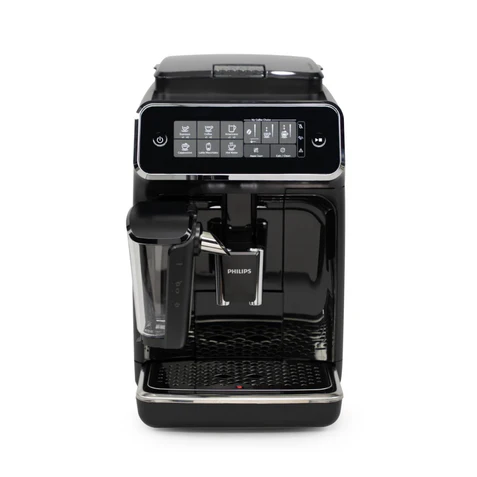
Philips 3300 vs 4300 Espresso Machines Comparison
The Philips 3300 and 4300 espresso machines are both designed for home baristas who value convenience and quality. The 3300 model offers a compact, sturdy build with a basic button interface, making it a great choice for those who prefer simplicity. In contrast, the 4300 model features a more premium design with chrome accents and a full-color touch screen, providing a more intuitive and customizable experience.
Both machines deliver excellent espresso quality, but the 4300 stands out with its enhanced user interface and additional features, making it a better option for those looking for a more modern and versatile espresso machine. Choosing between the Philips Series 3300 and 4300 can be challenging, given that both machines are designed to deliver high-quality espresso with ease. Let’s explore what sets these two models apart.
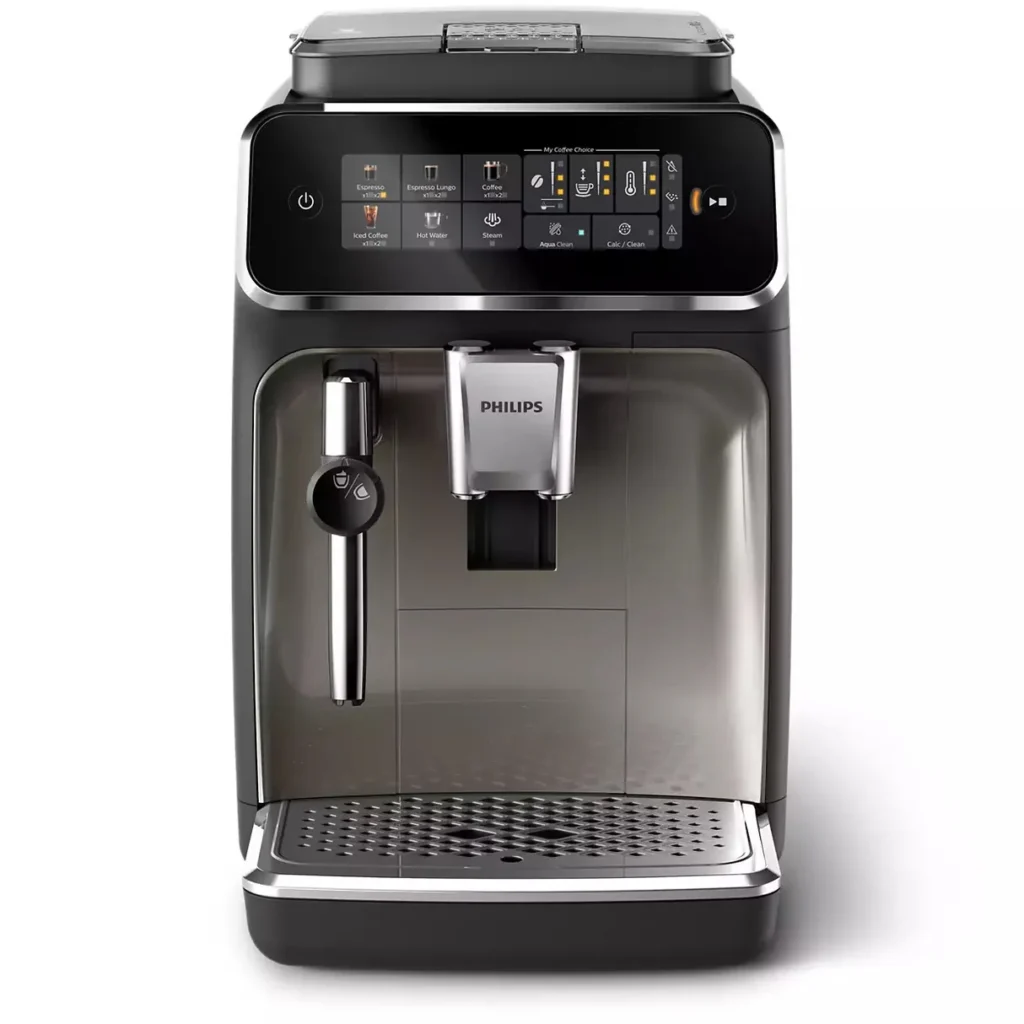
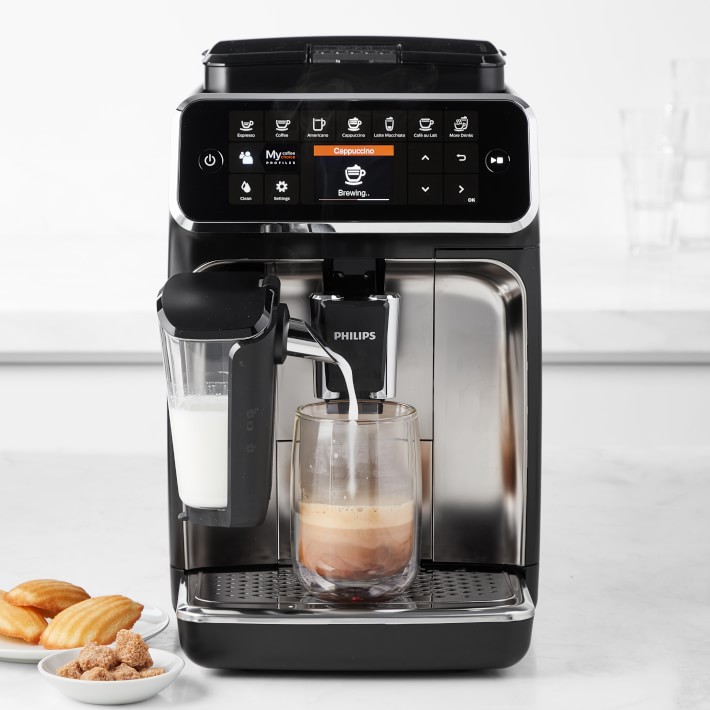
Key Features Comparison
Understanding the key features of the Philips 3300 and 4300 is crucial to determining which model suits your needs best.
User Interface
The user interface is a vital aspect of any espresso machine, affecting how easily you can brew your coffee. The Philips 3300 features a straightforward and intuitive control panel with buttons that make it easy to navigate between different coffee options. It’s designed for users who prefer simplicity and reliability.
The Philips 4300, on the other hand, takes the user experience up a notch with its advanced digital display. This touch screen interface is more modern and user-friendly, offering additional customization options. With the 4300, you can adjust the strength, temperature, and volume of your coffee with just a few taps, making it an ideal choice for those who love precision and customization.
Brewing Technology
Philips 3300
The Philips 3300 espresso machine is equipped with reliable brewing technology that ensures consistent quality in every cup. It uses a 15-bar pressure pump to extract the rich flavors and aromas from your coffee grounds, ensuring a perfect espresso shot each time. The machine also features the Aroma Extract system, which optimizes the balance between brewing temperature and aroma extraction by keeping the water temperature between 90 and 98°C. The result is a smooth, full-bodied espresso that retains its natural flavor profile.
Philips 4300
The Philips 4300 builds on the solid foundation of the 3300 but with enhanced brewing capabilities. It also features a 15-bar pressure pump, but it includes an improved Aroma Extract system that offers even greater control over temperature stability and extraction efficiency. In addition to its precise brewing, the 4300 model is equipped with the LatteGo system, which simplifies the process of making milk-based drinks like lattes and cappuccinos. This feature makes the 4300 a more versatile option for those who enjoy a variety of coffee beverages.
Design and Build Quality
The design and build quality of an espresso machine not only affect its durability but also its aesthetic appeal in your kitchen.

Philips 3300
The Philips 3300 sports a classic design that is both functional and durable. Constructed with high-quality plastic and stainless steel accents, it’s built to last while maintaining a sleek and timeless appearance. The machine’s compact design makes it a good fit for kitchens with limited counter space, and its user-friendly layout ensures that it’s accessible for all coffee lovers, from beginners to experts.
Philips 4300
The Philips 4300 offers a more modern and streamlined design, with a premium look that combines high-grade materials, including stainless steel and durable plastic. It has a slightly more compact footprint than the 3300, making it a great choice for those who want a machine that is both stylish and space-efficient. The build quality of the 4300 is exceptional, with a focus on precision and attention to detail, ensuring it can withstand the rigors of daily use while looking great in any kitchen setting.
Performance and User Experience
When it comes to performance and user experience, both the Philips 3300 and 4300 deliver exceptional results, but they cater to slightly different preferences.
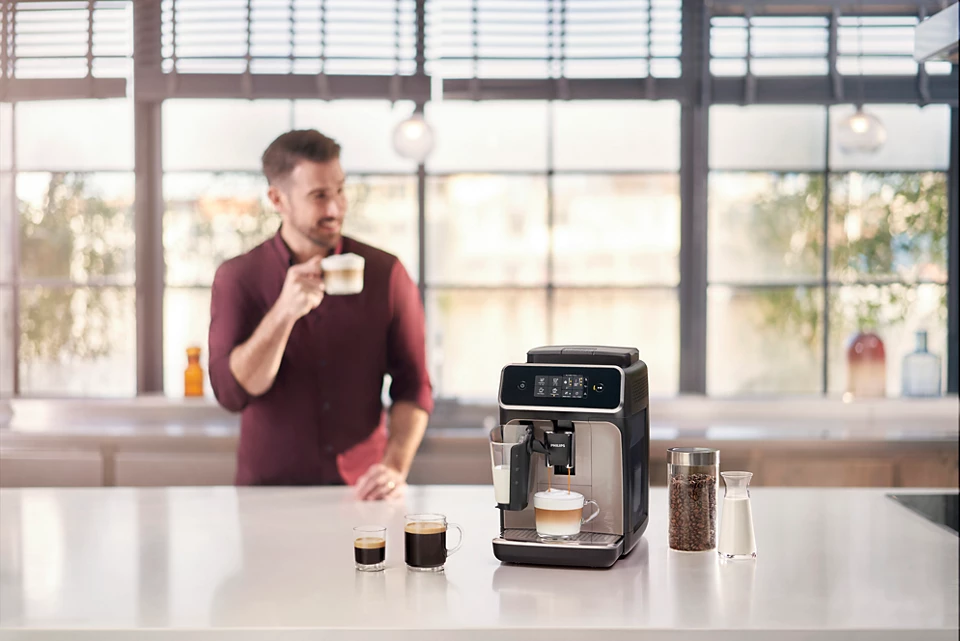
Philips 3300
The Philips 3300 is designed to provide consistent and reliable performance. With its 15-bar pressure pump and Aroma Extract system, it produces high-quality espresso with a rich crema. The machine heats up quickly, thanks to its efficient heating system, allowing you to enjoy your coffee without a long wait. Its straightforward control panel makes it easy to brew your favorite drinks, even if you’re new to espresso machines.
Philips 4300
The Philips 4300 elevates the user experience with its enhanced features. The advanced Aroma Extract system offers even faster heating and more stable temperature control, ensuring consistently excellent espresso shots. The digital touch display and customizable settings allow you to tailor your coffee to your exact preferences, whether you like it strong, mild, or somewhere in between. The inclusion of the LatteGo system also makes it easier to prepare milk-based drinks, making the 4300 a versatile and user-friendly option for coffee enthusiasts.
Ease of Use
Both the Philips 3300 and 4300 are designed with user convenience in mind, but they approach ease of use in different ways.
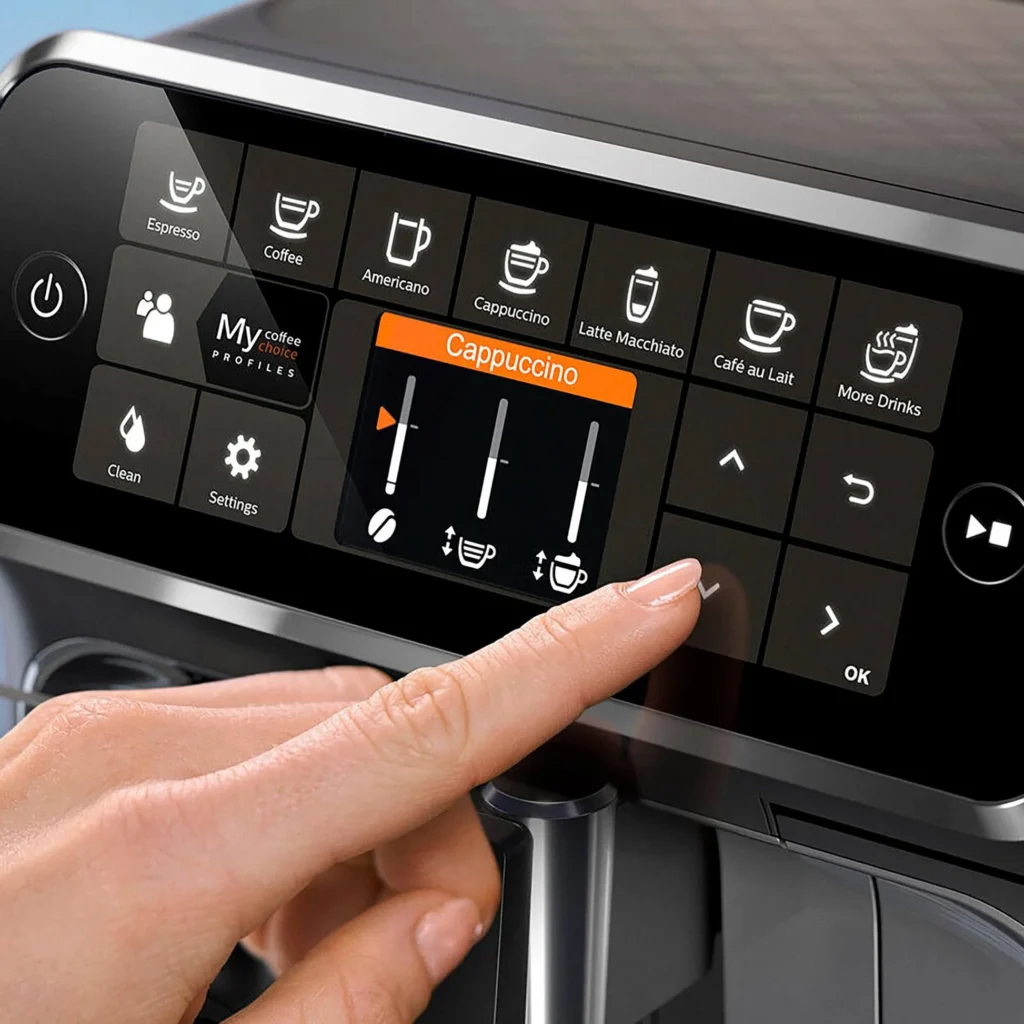
Philips 3300
The Philips 3300 is all about simplicity and accessibility. Its control panel features clearly labeled buttons for different coffee options, ensuring a minimal learning curve. This makes it an excellent choice for those who want a reliable espresso machine that is easy to operate right out of the box. The machine’s intuitive design allows users to quickly get the hang of brewing their favorite drinks without needing extensive instructions.
Philips 4300
The Philips 4300 enhances ease of use with its advanced touch display, offering a more interactive and modern experience. The customizable settings enable users to easily adjust coffee strength, volume, and temperature, catering to personal preferences. Despite its advanced features, the interface remains user-friendly, making it easy for both novices and experienced users to operate. The 4300 is particularly appealing to those who appreciate a high level of control over their coffee-making process.
Maintenance and Cleaning
Regular maintenance and cleaning are essential to keep your espresso machine in top condition. Let’s see how the Philips 3300 and 4300 compare in this regard.
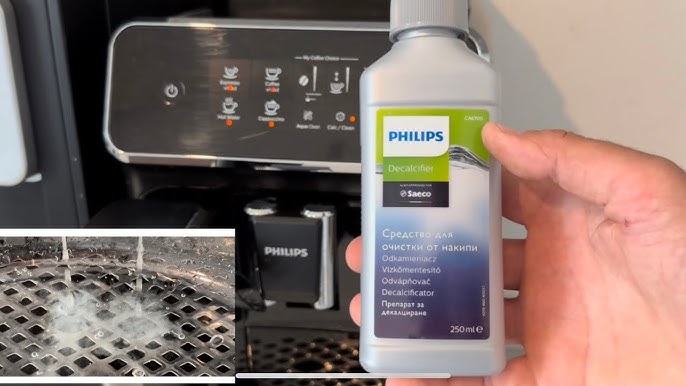
Philips 3300
Maintaining the Philips 3300 is straightforward, thanks to its removable brew group and dishwasher-safe components. The machine also features a descaling alert, reminding users when it’s time to descale, which helps prolong the machine’s lifespan. Regular cleaning of the drip tray, coffee grounds container, and water tank is essential to ensure optimal performance. The overall maintenance process is designed to be user-friendly, making it easy to keep the machine in great shape with minimal effort.
Philips 4300
The Philips 4300 is designed for easy maintenance as well, featuring the LatteGo system, which consists of only two parts and no tubes, making it quick to clean. The machine’s brew group is also removable for thorough cleaning, and many parts are dishwasher-safe. Regular descaling and cleaning routines are simplified thanks to the machine’s automated alerts and intuitive design. The 4300’s maintenance process is slightly more advanced than the 3300, reflecting its higher-end features and design.
Price and Value
Price is a significant factor when choosing between the Philips 3300 and 4300. Both machines offer excellent value, but they cater to different budgets and preferences.

The Philips 3300 is priced as an entry-level to mid-range espresso machine, making it an attractive option for those who want a quality machine without a hefty price tag. It offers essential features and reliable performance, making it a solid investment for coffee lovers who are looking for great value at a reasonable price.
The Philips 4300, while slightly more expensive, justifies its higher price with advanced features like the LatteGo system and a digital touch display. It offers a premium espresso experience with greater customization and convenience, making it a worthwhile investment for enthusiasts who seek top-notch performance and ease of use.
Cost Comparison
When comparing the Philips 3300 vs 4300 espresso machines, the cost is a critical consideration. Here’s a detailed look at the prices and whether the additional features of the higher-priced model are justified.
Direct Price Comparison:
The Philips 3300 is positioned as an affordable, mid-range espresso machine, typically priced between $500 to $600. This makes it a great option for those who want to enjoy high-quality espresso at home without breaking the bank.
In contrast, the Philips 4300 is a higher-end model with a price tag ranging from $700 to $800. The higher cost reflects its advanced features and improved build quality, catering to users who desire more control and customization in their coffee-making experience.
Justifying the Higher Cost:
The higher cost of the Philips 4300 can be justified by several key features that enhance the overall user experience:
- Advanced Brewing Technology: The 4300’s Aroma Extract system offers faster heating times and more precise temperature control, ensuring consistently excellent espresso shots.
- User Interface: The digital touch display on the Philips 4300 offers a more intuitive and interactive experience compared to the simpler control panel of the 3300.
- Build Quality: The Philips 4300’s combination of stainless steel and high-quality plastic components gives it a more premium and durable feel.
- Customization Options: The 4300 offers more customization settings, allowing users to fine-tune their espresso to their exact preferences.
While the Philips 3300 provides excellent value at a lower cost, the Philips 4300’s higher price is justified by its advanced features, improved user interface, and superior build quality. For users who are passionate about their coffee and willing to invest in a more sophisticated machine, the Philips 4300 offers substantial benefits that make the additional cost worthwhile.
Consumer Reviews and Feedback
Understanding the experiences of other users can provide valuable insights when deciding between the Philips 3300 and 4300 espresso machines. Here’s a summary of customer reviews and feedback, highlighting satisfaction levels and common complaints for both models.
Positive Feedback
Philips 3300
Customers generally praise the Philips 3300 for its ease of use and reliable performance. Many users appreciate the straightforward control panel and the quality of espresso it produces. The machine’s compact design and efficient brewing technology are often highlighted as strong points, particularly for those who enjoy a no-fuss coffee-making experience. Users frequently mention that the 3300 offers great value for money, delivering consistent results without the need for advanced features.
Philips 4300
The Philips 4300 receives positive reviews for its advanced features and user-friendly interface. Customers love the LatteGo system for its convenience and easy cleaning. The digital touch display and customizable settings are frequently mentioned as standout features that enhance the brewing experience. Many users feel that the higher price is justified by the added convenience and performance, making it a favorite among espresso enthusiasts who seek a more premium experience.
Criticisms and Issues
Philips 3300
Some users have reported minor issues with the Philips 3300, such as the need for frequent descaling and occasional leaks from the water tank. A few customers also feel that the machine’s plastic components could be more durable. Despite these concerns, the overall feedback remains positive, with many users acknowledging that these issues are manageable given the machine’s price point.
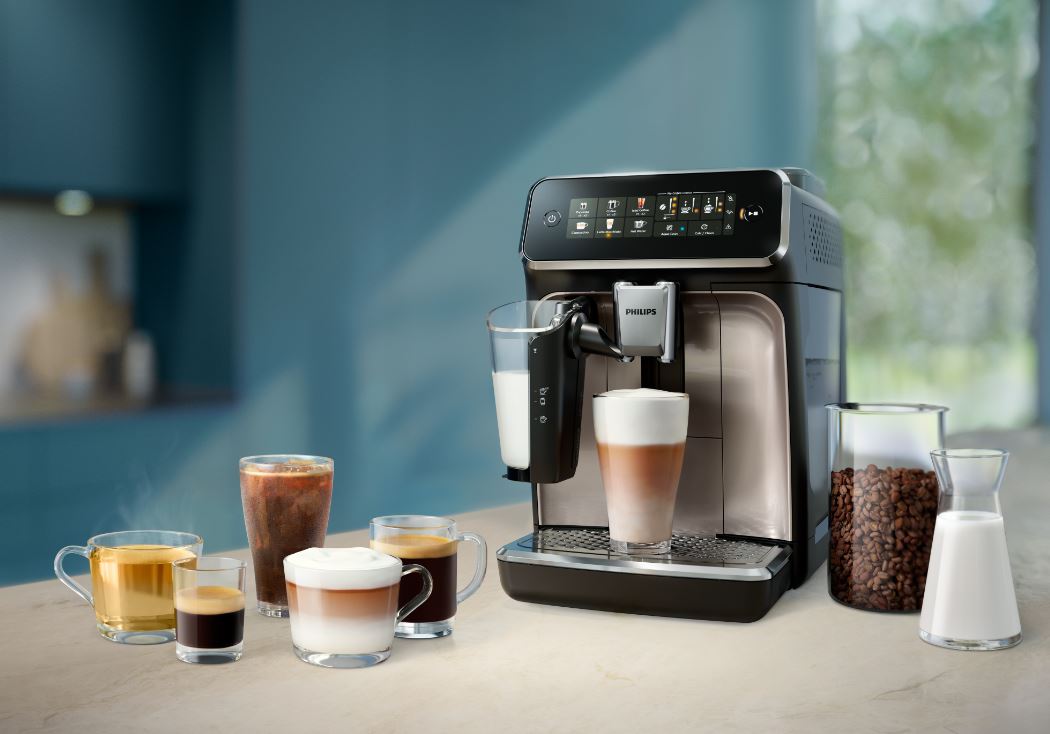
Philips 4300
The Philips 4300, while generally well-received, has its share of criticisms. Some users find the touch display to be overly sensitive, leading to accidental selections. A few customers have also reported inconsistencies with the LatteGo system, particularly in achieving the desired froth texture. Additionally, the higher price is a point of contention for budget-conscious buyers. Nonetheless, most users agree that the benefits outweigh these drawbacks, especially for those seeking advanced features and customization.
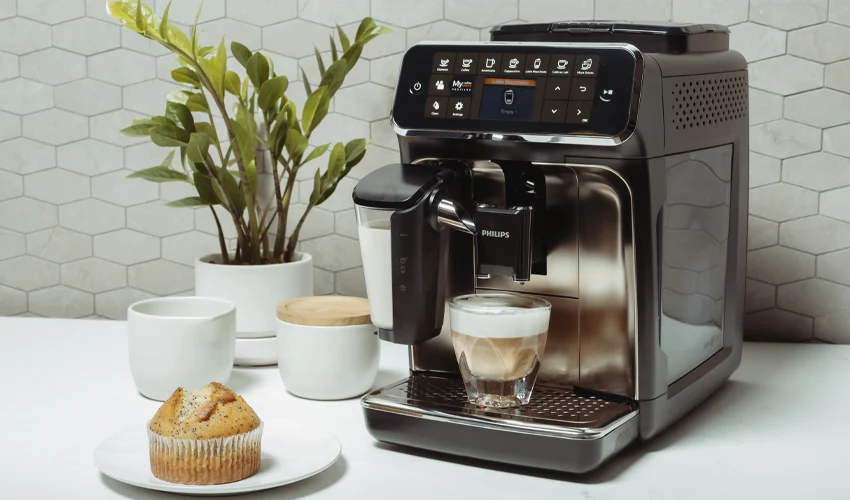
Conclusion
Both the Philips 3300 and 4300 espresso machines are excellent choices, each offering distinct advantages depending on your needs and budget. The Philips 3300 is perfect for those who prioritize simplicity, reliability, and value for money, while the Philips 4300 caters to coffee enthusiasts who appreciate advanced features, customization, and a premium experience. By considering the detailed comparison provided in this article, you can choose the model that best fits your coffee-making preferences and lifestyle.
Disclosure: Our blog contains affiliate links to products. We may receive a commission for purchases made through these links. However, this does not impact our reviews and comparisons. We try our best to keep things fair and balanced, in order to help you make the best choice for you.





